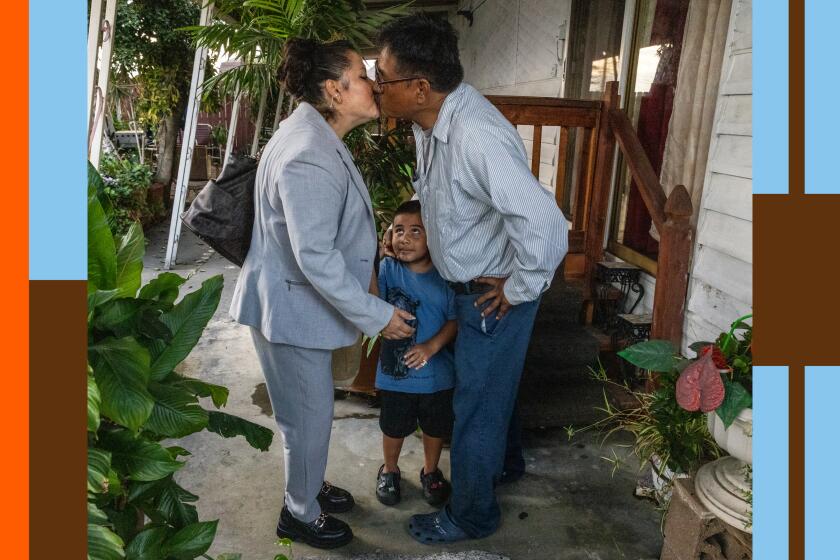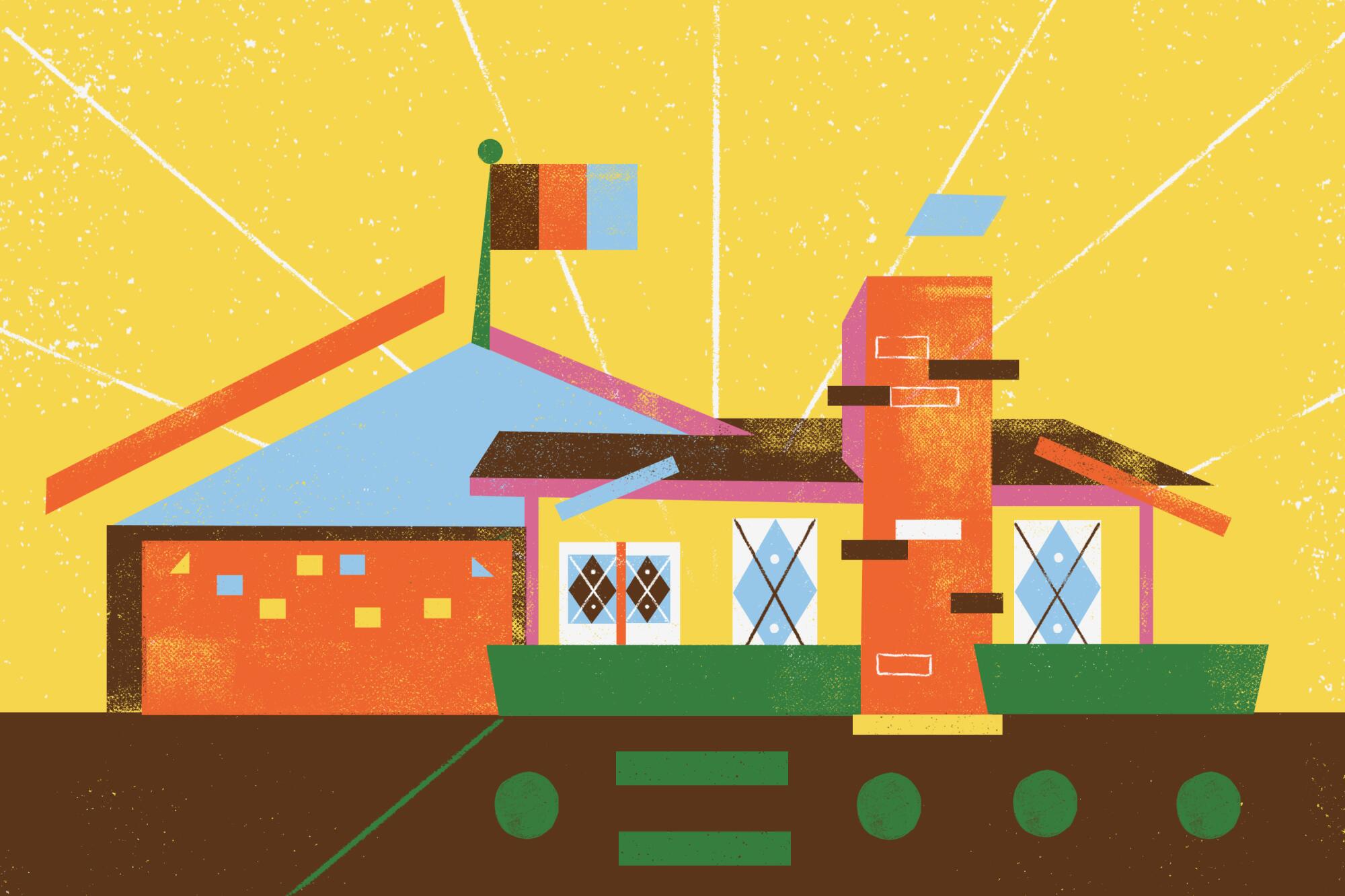
- Share via
When I think about the American dream, I think of Julio Arana.
He was my student at Cal State Fullerton a decade ago, a crackerjack of a kid from Jalisco who didn’t know what he wanted to do with life but knew the United States was the place to do it in. Today, the 36-year-old is a real estate agent who owns seven properties, from Orange County to the Coachella Valley, and flips houses like a cook handles pancakes. But Arana prides himself most on helping young couples, Latinos and not, buy their first homes.
“I couldn’t have done this in Mexico,” he told me as we stood in front of his latest purchase, a beat-up 1925 Spanish Revival in Santa Ana just down the street from another house he owns. Long-haired, tanned and tattooed, Arana wore a stylish brown hat and a T-shirt with Emiliano Zapata drawn as the grinning skull logo of punk icons the Misfits. “The one thing this country still offers is that the little guy can get it.”
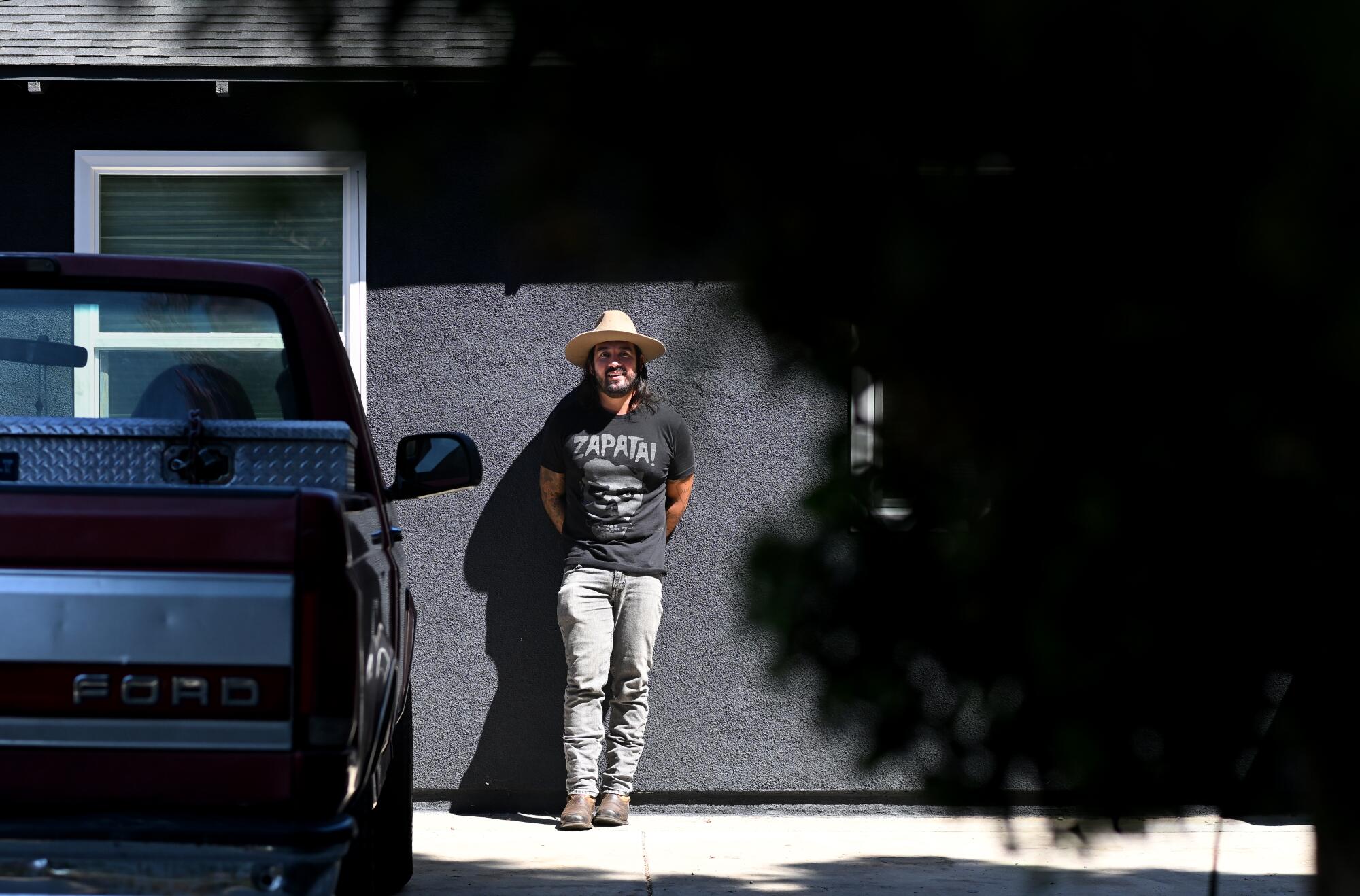
We were at his newest acquisition because he wanted me to see something: On the side of the house, on a wall behind a trellis near the driveway, was a bas-relief stucco swastika the size of an adult head. A previous owner was a World War II veteran, but Arana had no idea why the white-power emblem was there. A historical curio? Emblematic of the previous owner’s beliefs?
It didn’t matter: It was personal to Arana.
“The first property I bought, in Desert Hot Springs, I had to evict Nazis,” he said. “This is full circle.”
Drawing on an unprecedented poll, this series tells the stories of immigrant life in America today, putting their voices in the foreground.
Just a few moments earlier, we had spoken to his neighbor, Marco Chavez. Arana told him his story — he came to this country without papers as an 8-year-old — and the 61-year-old Chavez shared a bit of his: An immigrant from Morelos who bought his home in the early 2000s. His five children are college graduates. He just finished a living trust.
“My chamacos have come out good,” Chavez told us in Spanish, holding a coffee cup in one hand and a cigarette in another as he looked at his three vintage VW buses parked on the street. “We’ve all done good.”
Julio and I were getting ready to drive 10 minutes away, to a Santa Ana duplex where he was finishing up an ADU. “For us [immigrants] ... there’s all this opportunity around us. People leave their homelands out of despair, and their hope is gone. Here, there’s hope. I see it all around me.”

When my editor first told me that a nationwide L.A. Times/KFF poll found that immigrants are more optimistic about life in the United States than native-born Americans, my initial response was: story of my life.
I was raised in a run-down granny flat in Anaheim a stone’s throw from a lumberyard, the only place my immigrant parents could afford when they married in 1978. By the time I was 10 in 1989, my mother — a tomato canner — and my truck-driving dad had saved up enough to buy a post-World War II tract home in a better part of town.
Immigrants to the U.S. face extensive challenges, but they still report high levels of optimism about their futures and trust in American institutions, a comprehensive survey has found.
Within five years, our street went from majority white to almost exclusively Latino. Our former neighbors moved to Washington, Arizona and other states because, they told my parents, the neighborhood wasn’t “safe” anymore, and California was changing.
Thirty-five years later, my dad and youngest brother are still there, the mortgage paid off years ago. I own my own home. So does the sister that follows me.
My parents never explicitly told us about the American dream. Each grew up in wrenching poverty in Zacatecas, one of the poorest states in Mexico. They couldn’t give us much besides a roof over our heads and back-to-school clothes from Montgomery Ward, but their lives were an unspoken lesson: Life in this country is tough, but life back in the rancho was far harder. You’ve got a shot here — so make something of it, because we did.
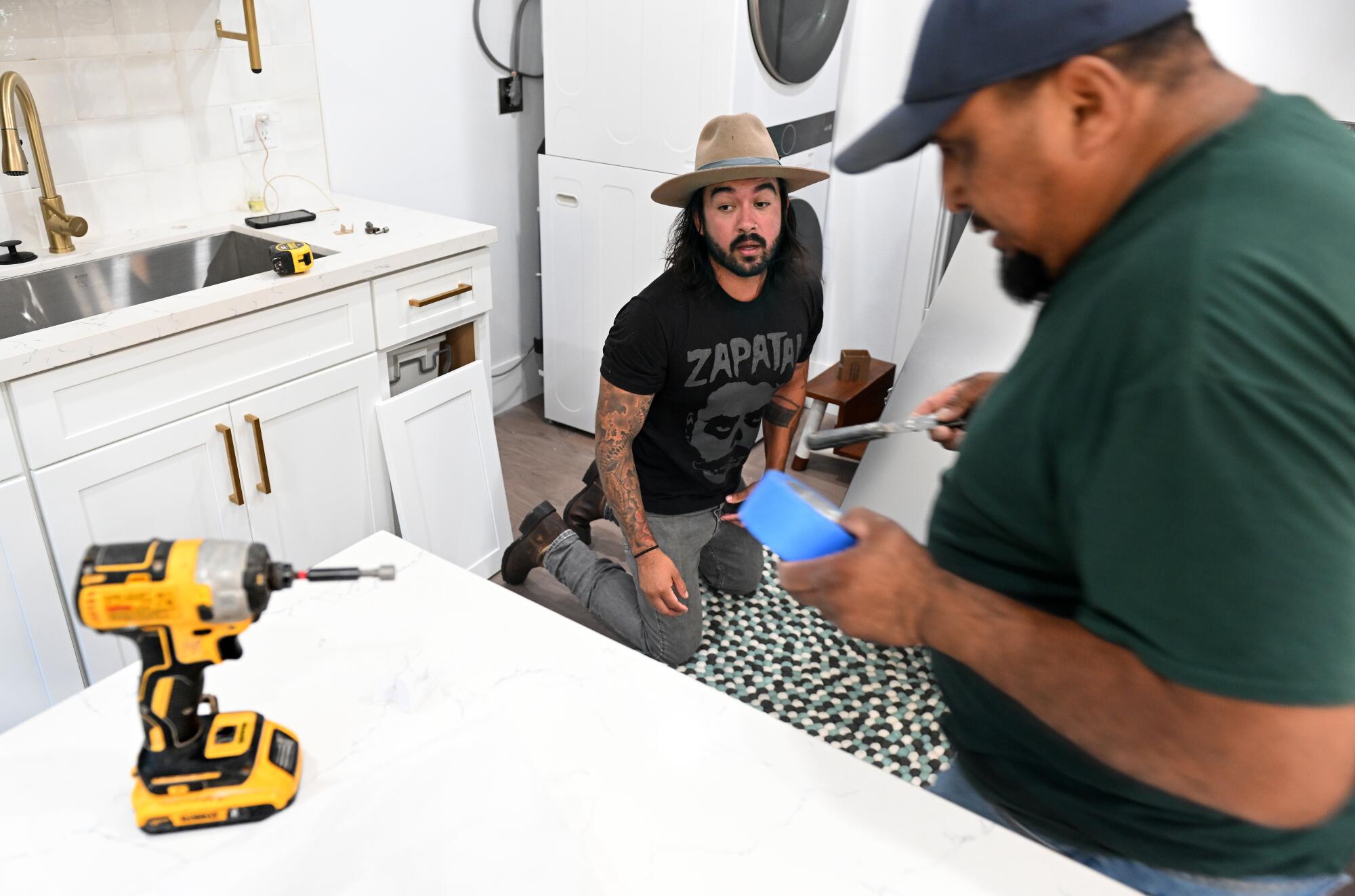
The L.A. Times/KFF survey also revealed that Latino immigrants aren’t just optimistic, on some measures, they’re more optimistic than other immigrant groups. It’s a tendency that USC sociology professor Jody Agius Vallejo said “studies have found time and time again” — and that more than a few pundits find weird.
She has devoted her research to studying upper- and middle-class Latinos, whose stories of hope and achievement like that of my family and Julio are legion. That includes the family of her husband, immigrants from Jalostotitlán, Jalisco, who settled in Watts in the 1960s and established a pioneering Latino grocery chain.
“I do get frustrated when people are surprised that Latinos are optimistic,” Agius Vallejo said. “Why wouldn’t they [be]? We can’t discount the fact that Latinos have been subject to significant discrimination and segregation and still make something of themselves. It’s a point of pride for them.”
That’s why I roll my eyes when I hear Americans whine about how their country is ruined — and few are more histrionic than former President Trump. Just this July, he told a rapt crowd that “the American dream is being torn to shreds” and the country is “going to hell, and it’s going to hell very fast.”
Whiners: If you don’t like the U.S., leave. Leave it to immigrants.

When I think of the American dream, I think of my uncle, Ezequiel Miranda.
He, my late mother and three aunts came to the United States as children with my grandparents in the early 1960s. They picked crops near Hollister, Calif., before making their way down to Anaheim, where my grandfather, José Miranda, had picked and packed oranges in the 1920s in what was then a segregated city. My uncle dropped out of school in seventh grade, fearing what might happen after he beat up the white bully who had made his life hell for too long.
I still remember the granny flat in Anaheim that mi tío, his wife, Marbella, and five of his six children lived in when I was growing up in the 1980s. It was next to a muddy alley, in a barrio worse than ours. But my uncle, a member of Cement Masons Local 500 for more than 30 years who worked on projects including Disney California Adventure and what’s now called the Crypto.com Arena, lived the maxim he always told his children and us cousins: A trabajar. Get working.
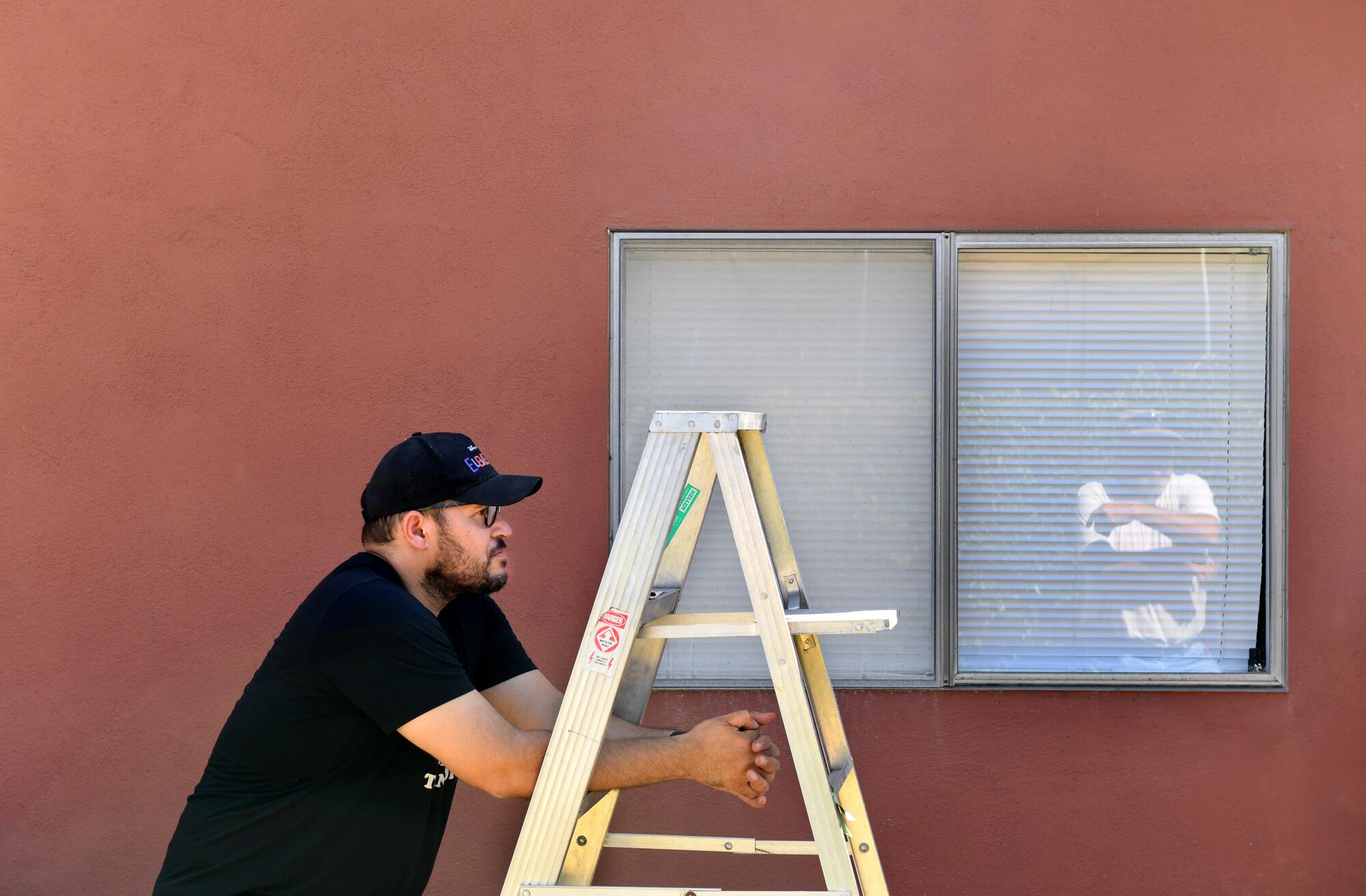
He bought a small house in Anaheim, traded that one for a bigger one down the street and then settled into a two-story home with a swimming pool in Placentia, where he and Marbella still live. They’re finally empty-nesters: Last week, my cousin Placido, his wife and their two teenage daughters moved into a four-bedroom home in Anaheim after selling their condo during the pandemic and staying with his parents.
At 46, he’s the last of his siblings to own a home. His house is on the type of street where neighbors mistook mi tío for the gardener.
“When we bought it, it looked like the set of Jack Tripper’s apartment,” Plas said, referring to a character in the 1970s and ’80s sitcom “Three’s Company,” as he took me on a tour of his kitchen (I call my cousin Plas, and he calls me Gus. Assimilation!). He’s a delivery driver for Frito-Lay who didn’t go beyond community college but is probably the smartest person I know. He sells movie memorabilia and sneakers on EBay as a side hustle, once offering a slew of $1 white T-shirts online for $25 apiece.
New floorboards, cabinets, fixtures, lights and walls gleamed. The granite countertops were on their way.
“My dad came in, and he began to tear things out immediately,” Plas said. “My two handles for this drawer,” he continued, sheepishly shaking his head, “took an hour and a half to install.”
Carrying out the KFF/L.A. Times survey of immigrants required work far beyond the normal survey, but the result provides a unique source of information about America’s immigrant population.
We moved on to his backyard, where mi tío had trimmed hedges that the previous owner let overgrow. He’s now 70 but looks decades younger. I asked mi tío how he felt about how life turned out in the U.S.
“I go to one street, there’s one of my kids. Go to another, another,” he said in Spanish. He’s usually gregarious but now was soft-spoken. “I worked for 50 years. This is my dream.”
“The reason people don’t feel [the American dream] is attainable is because everything is just more expensive,” Plas said. “They almost resign themselves to saying, ‘I can’t buy a house.’
“But when you grow up with dirt floors and laminate roofs, that motivates you to reach for more. When we went to McDonald’s growing up, it was a special occasion. When my parents would buy ice cream, we’d all get just one spoonful and knew to appreciate it.”
“Now,” Plas concluded with his usual sly smile, “my daughters leave cereal in their bowl.”
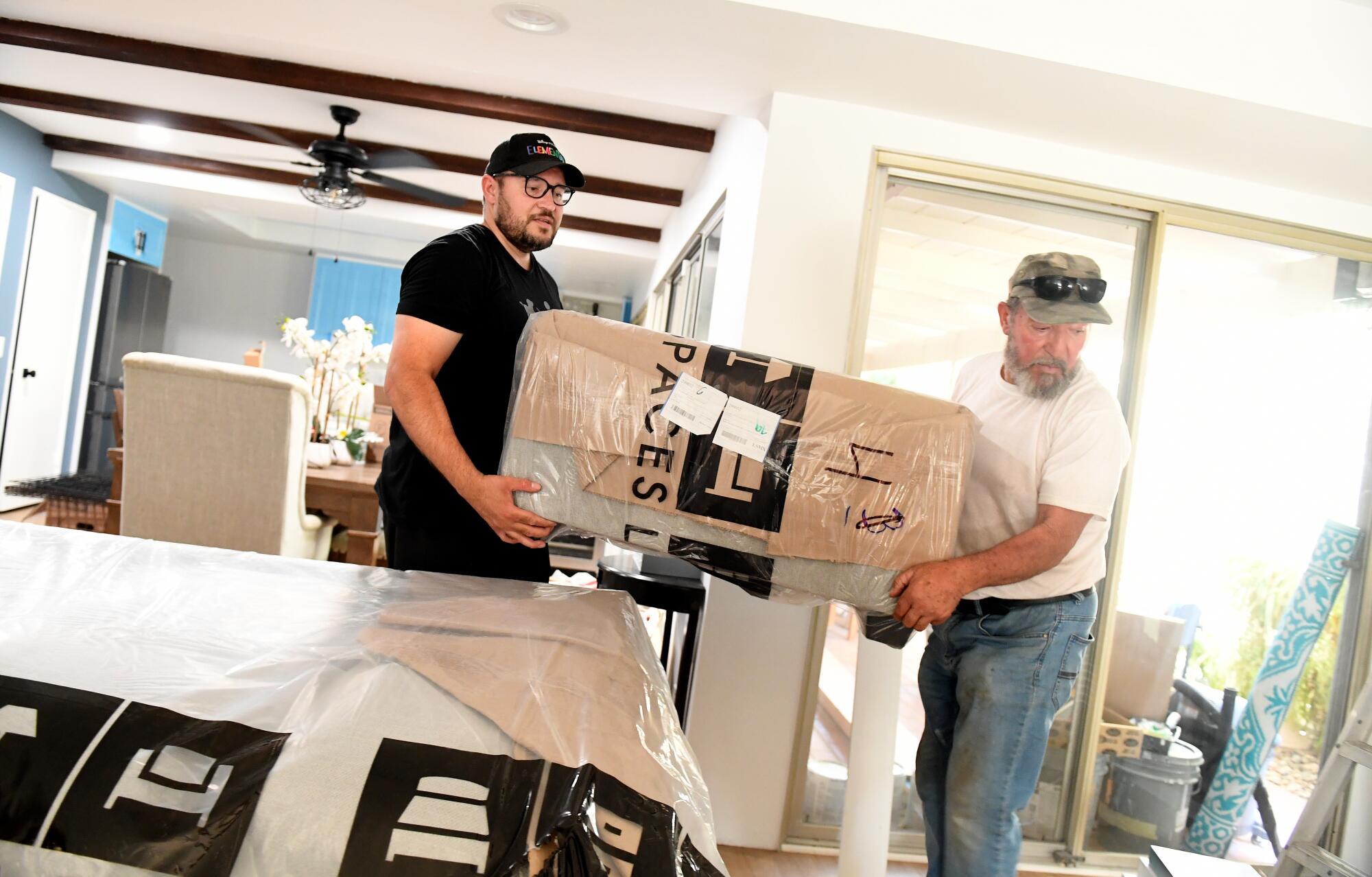

The L.A. Times/KFF survey might not be news to you. It might even seem boring. But its findings are vital. It’s the template for how this country can move forward from the chaos and division that have afflicted us since the rise of Trump.
To adapt a phrase from Thomas Jefferson, the tree of liberty must be refreshed with immigrant hope.
The doom and gloom that too many Americans screech about on social media and in their personal lives — on both sides of the red-blue divide — is a betrayal of what brought their ancestors here, and what continues to attract people from across the world. Pessimism, not political differences, is what’s bringing down this country; the optimism of newcomers is our best shot to survive.
When I think about the American dream, I think about the bus that arrived Sept. 9 at Union Station from Brownsville, Texas. It’s the 13th such one-way trip since June arranged by the administration of Texas Republican Gov. Greg Abbott.
He signed off on them shortly after L.A. declared itself a sanctuary city, meaning city personnel and resources can’t be used to help federal officials deport immigrants.
Abbott says he’s sending us migrants to protest the supposed lax security at the U.S.-Mexico border, but he’s really mocking the American dream. His moves are descended from Proposition 187, the 1994 California ballot initiative that sought to make life miserable for immigrants without legal status but was eventually ruled unconstitutional.
I grew up in that era, and its rank xenophobia propelled me to not just devote my life to fight back, but also to look for the good in this country instead of the bad. Because if my parents could do it, why not me?
Proposition 187 had the same effect on Angelica Salas, the longtime head of the Coalition for Humane Immigrant Rights of Los Angeles and the daughter of Mexican immigrants. Her group is part of a coalition of nonprofits and faith groups called L.A. Welcomes Collective, which has helped to connect the migrants Abbott has kicked out of Texas with housing and relatives in the United States.
“They are the most patriotic individuals in our country because they’re always hoping that America’s ideals and purported values will happen in their lives,” Salas said of the immigrants she works with. “If it doesn’t, then they hope it happens in the lives of their children. And if it doesn’t for them? Then their grandchildren. Their tenacity to not give up is contagious. ”
That’s the spirit Americans need anew. Immigrants now, immigrants tomorrow, immigrants forever.
More to Read
Sign up for Essential California
The most important California stories and recommendations in your inbox every morning.
You may occasionally receive promotional content from the Los Angeles Times.


